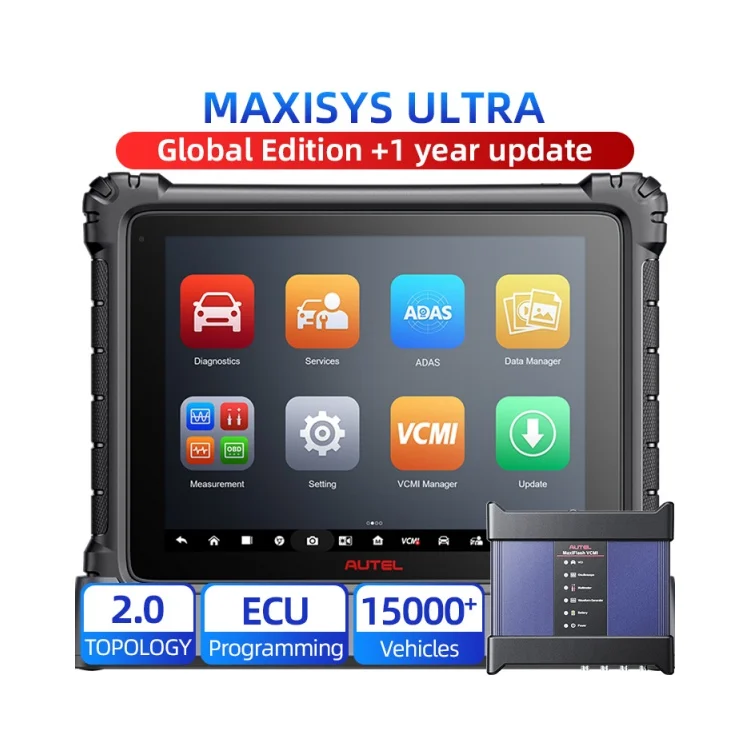Qianhai World Trade Finance Center Phase II, No. 3040 Xinghai Avenue, Nanshan Street, Qianhai Shenzhen-Hong Kong Cooperation Zone, 2001.
Qianhai World Trade Finance Center Phase II, No. 3040 Xinghai Avenue, Nanshan Street, Qianhai Shenzhen-Hong Kong Cooperation Zone, 2001.
Modern cars rely heavily on their Engine Control Units (ECUs), which act like the car's main brain and really affect how well everything runs. These units handle all sorts of important stuff behind the scenes including when fuel gets injected into the engine, when spark plugs fire, and even how emissions are controlled so vehicles meet those strict environmental rules we all know about. Things have gotten pretty advanced lately though. Many newer ECUs now incorporate elements of artificial intelligence that let them adjust settings on the fly based on real time conditions, making engines run better while using less gas at the same time. As technology continues to evolve, these smart control systems will only become more sophisticated, helping drivers get around town without breaking the bank at the pump.
Tuning an ECU basically means changing how a car's computer controls things like fuel mixture, ignition timing, and boost pressure to get more power out of it. There are different ways people do this stuff these days. Some folks go for remapping where they rewrite the software inside the ECU itself. Others might swap out certain chips in the system for ones that give better performance numbers. Then there are those piggyback systems that sit next to the original ECU and tweak signals going back and forth between sensors and actuators. Before jumping into any of this though, drivers should really check what their carmaker says about modifications because messing around without knowing what you're doing can actually break parts down the road. The bottom line is that getting extra horsepower from ECU tuning works great when done right, but nobody wants to spend money fixing engine damage caused by bad tuning jobs later on.
Tuning the ECU programming gives vehicles a real power boost, especially when it comes to horsepower and torque through better fuel map optimization. When done right, this kind of tuning makes engines run smoother while getting more performance out of each tank of gas. Real world testing shows most cars see somewhere between 10% and 20% extra power after proper ECU work, though results vary based on what car we're talking about and how the engine was built. Look at professional racing circuits where top teams spend thousands tweaking their ECUs just for those extra tenths of a second. These adjustments let race cars hit higher speeds faster than stock models ever could, which is why serious racers treat ECU programming like gold dust in their quest for victory.
Tweaking those ECU parameters makes a real difference for both fuel efficiency and cutting down on carbon output. When mechanics adjust how the engine control unit works, cars burn fuel more efficiently which means getting more distance out of each tank. Some tests show that after proper ECU programming, drivers might actually save around 15% on their gas bills. There's another benefit too - properly tuned engines meet emission regulations much easier. Cars stay within legal limits for pollutants, so owners don't get hit with fines or inspection failures. For anyone looking at their wallet, these savings add up over time. But beyond just saving money at the pump, there's something bigger happening here. Cleaner burning engines help reduce overall pollution levels, making our roads safer for everyone who travels them daily.
Getting the right OBD2 scanner matters a lot when it comes to working with ECU programming because these devices do most of the heavy lifting in diagnostics and performance adjustments. The market offers different kinds of OBD2 scanners, starting with simple code readers all the way up to sophisticated diagnostic equipment capable of logging data, monitoring things in real time, and even rewriting ECU settings. Quality scanners read fault codes accurately and handle complex diagnostics properly, something that makes a big difference when trying to get the best out of a vehicle's performance. Bluetooth enabled OBD2 scanners bring extra benefits through wireless connections, so mechanics can check live data on their phones or tablets without being tethered to the car. This makes the whole process of tuning and diagnosis much easier in practice. For shops and DIY enthusiasts alike, having access to detailed performance metrics means technicians can actually see what needs fixing or adjusting, leading to better results across the board.
When working on ECU programming, taking things step by step really helps avoid problems down the road. Start off by getting all the right stuff together first. A good quality OBD2 scanner is pretty much mandatory, along with whatever software works best for the job at hand. Once everything's ready, hook up the vehicle to the programming equipment properly. Read through those manufacturer guidelines carefully before proceeding. Making adjustments to the ECU needs to be done thoughtfully so nothing critical gets messed up during the process. Safety should always come first too. Disconnect the car battery when possible to stay safe from electrical shocks, and definitely take care to ground oneself against static electricity before touching any components. People often run into trouble with their ECU programming because they use incompatible software versions or set parameters wrong somehow. This usually ends up costing them time and money later on. If something goes wrong, start by looking for available software patches, double check all physical connections between devices, and sometimes just resetting the ECU itself fixes mysterious issues. Taking all these steps seriously makes a big difference in how well the whole operation turns out, plus it keeps expensive damage away from the vehicle.
The Autel MaxiSys Ultra EV has become something of a game changer in the world of electric vehicle diagnostics. What makes this device special is that it can handle everything from pure electric cars all the way to traditional gas engines and hybrids too. Mechanics really appreciate features such as expanded wiring diagrams and deep battery health checks which give them much better insight during troubleshooting. Works on almost every car model out there these days, though nobody actually needs that 99.999% compatibility figure to sell it. Most technicians find it absolutely indispensable when working on EV systems specifically, especially when they need to reprogram those tricky electronic control units. Shop owners report fewer comeback issues since their techs started using this system regularly, combining the standard MaxiSys platform with specialized tools for modern electric vehicles.

What really stands out about the Launch X431 Pad VII is how well it handles multiple protocols, which means it works on pretty much any vehicle type or system a mechanic might encounter. The interface isn't complicated at all, which is great because time matters when working on cars. Advanced stuff like ADAS calibration and TPMS service comes standard, plus it connects to almost every diagnostic module around. Shops that deal with lots of different car models find this incredibly useful since they don't need separate tools for each brand's unique protocol requirements. With support for over 110 car brands and regular software updates down the road, most experienced technicians would agree this becomes a must-have piece of equipment for anyone doing serious ECU programming work.

The Autel MaxiSys Ultra has become a go to tool for mechanics needing fast diagnostics and ECU programming work done right. Under the hood sits a powerful Samsung Exynos8895V octa core processor that handles all those complex tasks without breaking a sweat something most professional tuners appreciate when racing against deadlines. What really sets this device apart though is how many different cars it works with from luxury sedans to rugged trucks covering pretty much everything on the road today. Techs who have actually used it report being impressed by both reliability and straightforward operation they don't waste time figuring out complicated menus when there are cars waiting in line.

The Launch X431 Pro5 stands out thanks to its small footprint that fits comfortably in even tight garage spaces. With J2534 certification (which basically means it meets industry standards for vehicle programming), this device can handle everything from basic diagnostics to complex system reprogramming across multiple car brands. Mechanics love how it works with Ford, GM, Chrysler and others without needing separate tools for each manufacturer. What really makes a difference on the shop floor is when technicians need to update software or troubleshoot issues quickly between appointments. The intuitive interface combined with solid build quality ensures this tool keeps working reliably day after day in high-pressure automotive repair environments where time equals money.

People love the Autel MaxiCom Ultra Lite because it's so easy to use and straightforward, which works great whether someone is just starting out or has been working on cars for years. This device plays nice with almost every car brand and model out there, plus it comes packed with all sorts of useful features that make life easier in workshops big and small. Mechanics who have actually used it report that it handles ECU programming without giving them headaches most of the time. That's why many garages keep one handy for everything from basic diagnostics to more complicated programming jobs across different types of vehicles.
